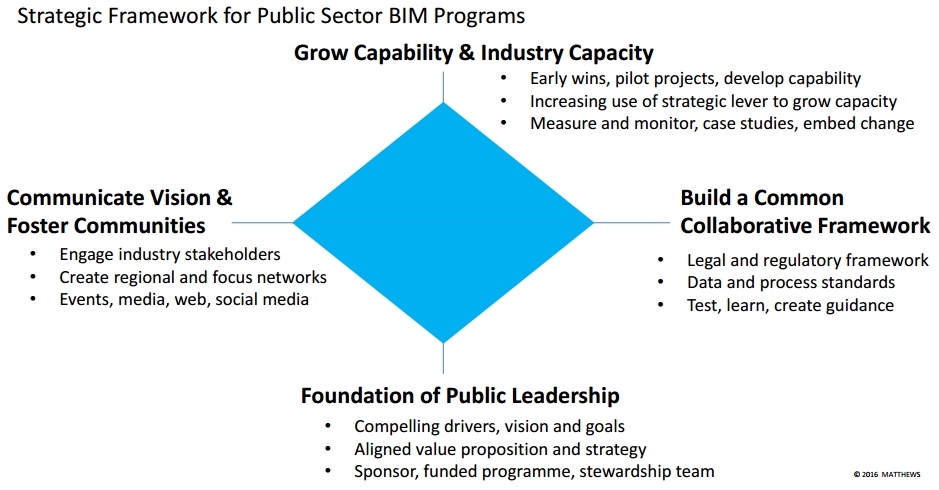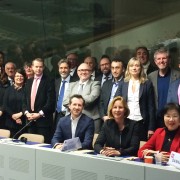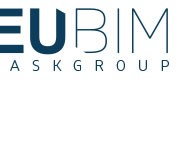The EU BIM Task Group sets its roadmap for the digitalisation of the construction sector. Souheil Soubra appointed Chair
The EU BIM Task Group aims at delivering greater value for public money while stimulating innovation and growth in both the construction and digital sectors in Europe. Soubra, a top expert in Building Information Modelling in France, will lead the group’s work.
Brussels, 22 January 2019 – The EU BIM Task Group is a pan-European network exchanging public sector expertise in the field of Building Information Modelling (BIM) from infrastructure and public estate owners, public clients and policy makers. On 17 December, the EU BIM Task Group held its annual General Assembly in Brussels to set its roadmap for the coming years and to elect a new Steering Committee, which will direct the efforts towards the digitalisation of the construction sector at the European level.
Building Information Modelling is a method which fosters the digital planning, manufacturing, construction and management of built environments based on their physical and functional characteristics. It is currently considered to be the most impactful technological development in the construction sector. Studies forecast that a wider adoption of this process will unlock a 15-25% saving for the global infrastructure market by 2025[1]. In a market as large as the European construction sector, which is worth over €1.3 trillion[2], even a 10% increase in efficiency would save the industry €130 billion. This impressive figure does not even take into account the potential social and environmental benefits of this paradigm shift, which could even be bigger; improved decision-making enhanced by BIM would support the efforts towards climate protection and resource efficiency, ensuring benefits for society at large.
In light of this, the main objective set by the EU BIM Task Group for the construction sector in the coming years is to achieve a sustainable and inclusive growth within Europe’s Single and Digital Single Markets by means of a wider adoption of Building Information Modelling. It is a challenging proposition, especially considering that the construction industry is currently one of the least digitised in Europe – therefore reaching this goal is key to ensuring the future competitiveness of the sector.
 During the General Assembly, the EU BIM Task Group appointed the new Steering Committee, which will lead the group’s work towards this goal. Dr. Souheil Soubra has been elected Chair of the EU BIM Task Group for the next two years. He is Director of the IT department at the Scientific and Technical Centre for Buildings (CSTB). Moreover, he is actively contributing to the French Digital Transition Plan, supported by the French Ministry for Ecological and Inclusive Transition and by the Ministry of Territorial Cohesion, in order to prepare a large-scale deployment of BIM in the French construction sector.
During the General Assembly, the EU BIM Task Group appointed the new Steering Committee, which will lead the group’s work towards this goal. Dr. Souheil Soubra has been elected Chair of the EU BIM Task Group for the next two years. He is Director of the IT department at the Scientific and Technical Centre for Buildings (CSTB). Moreover, he is actively contributing to the French Digital Transition Plan, supported by the French Ministry for Ecological and Inclusive Transition and by the Ministry of Territorial Cohesion, in order to prepare a large-scale deployment of BIM in the French construction sector.
Dr. Soubra is leading the EU BIM Task Group together with Architect Milena Feustel, German, who was appointed Deputy Chair during the General Assembly. The new Steering Committee includes Pietro Baratono (Italy), Dainius Čergelis (Lithuania), Diderik Haug (Norway), Brigitte Jacquemont (France), Benno Koehorst (Netherlands), Ingemar Lewén (Sweden), Adam Matthews (United Kingdom), Jaroslav Nechyba (Czechia), Jaan Saar (Estonia) and Jorge Torrico (Spain).
“I am honoured to take the lead of the Steering Committee of the EU BIM Task Group and truly grateful to be part of the ambitious and important plan to accelerate the digitisation process of the construction sector, especially now, in such a decisive moment”, said Souheil Soubra. “Building Information Modelling is currently regarded as the key method for the digitisation of the lifecycle of built assets, and we are now working to transform this awareness into a reality for the European construction sector. We are planning a number of actions to foster this development. For example, we are going to promote the creation of a common digital platform for construction, which would enable the automation of building lifecycle processes in the public and private sector. We are also going to propose a framework for the seamless exchange of digital information (based on open standards) and documentation of data information, which will enhance collaborative working environments. In short, we want to make built assets and infrastructure across Europe healthier, safer, smarter and more sustainable.”
The EU BIM Task Group, a network supported by the European Commission, was founded in January 2016 and rapidly grew to include 23 countries in Europe. Through this platform, public estate owners, infrastructure builders and operators, policy advisers and procurers from members of the European Economic Area (EEA) or European Free Trade Association (EFTA) can exchange best practices, stimulate co-innovation and draft strategies that will drive the construction sector towards a smarter, more efficient future. Learn more about the EU BIM Task Group on YouTube.
Contact details for press:
Marco Groppelli
Marco.Groppelli@icf.com +32 (0)2 333 59 50
ICF Mostra | Avenue Marnix 17, 1000 Brussels, Belgium
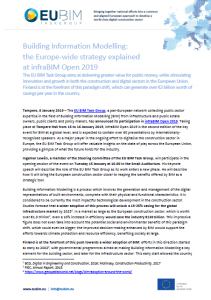 Click here to download PDF version of this press release.
Click here to download PDF version of this press release.
Note to editors:
If you are interested in setting up an interview with Souheil Soubra, please contact our press office.
[1] BCG, Digital in Engineering and Construction, 2016; McKinsey, Construction Productivity, 2017
[2] FIEC, Annual Report, 2018

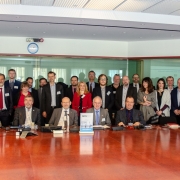


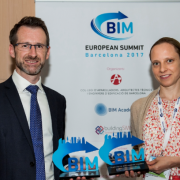
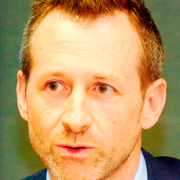
 In a two-part interview in
In a two-part interview in 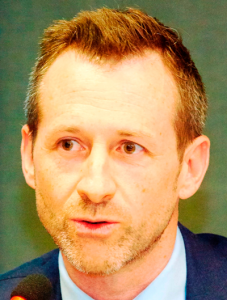 The UK with Norway started the group in late 2013 with 12 other European countries by holding a get-to-know-you session in Brussels. Since it formed as the EU BIM Task Group, it has grown to over 20 European nations with support and co-funding from the European Commission. The aim of the group is simple – create a common understanding of BIM in Europe and aim to spread common practice across public clients introducing BIM to public policy or public works. …
The UK with Norway started the group in late 2013 with 12 other European countries by holding a get-to-know-you session in Brussels. Since it formed as the EU BIM Task Group, it has grown to over 20 European nations with support and co-funding from the European Commission. The aim of the group is simple – create a common understanding of BIM in Europe and aim to spread common practice across public clients introducing BIM to public policy or public works. …
 I have started to think about how countries might develop national public sector BIM programmes.
I have started to think about how countries might develop national public sector BIM programmes.